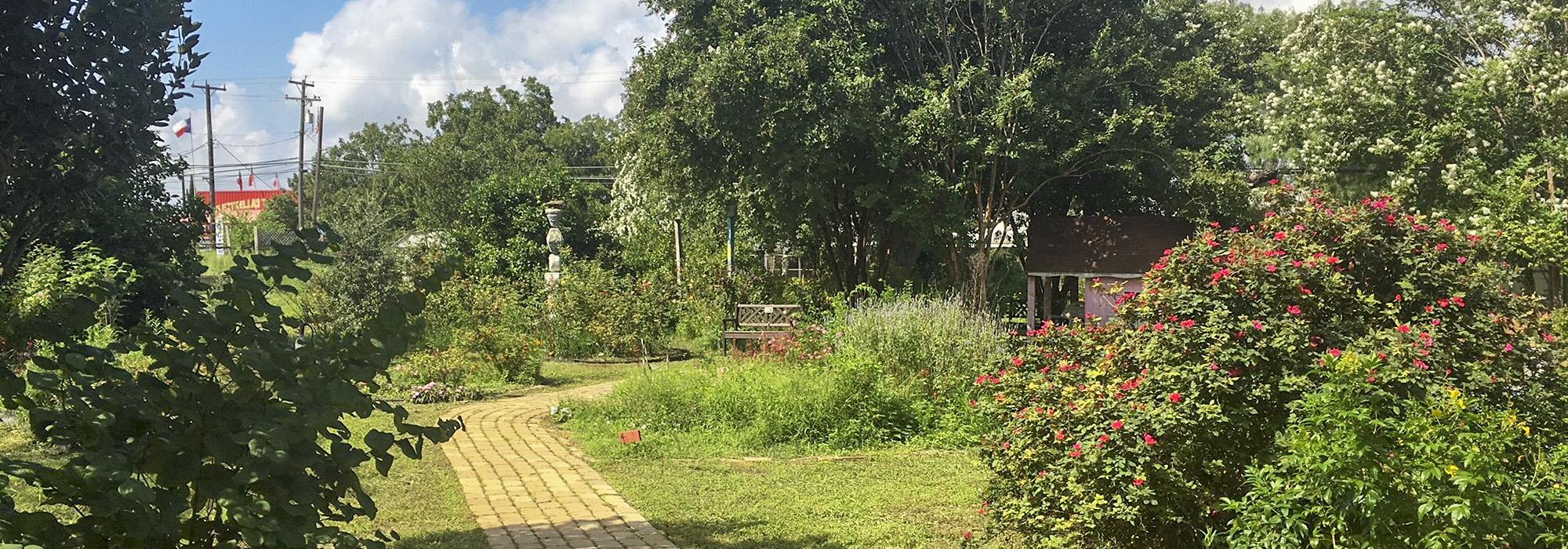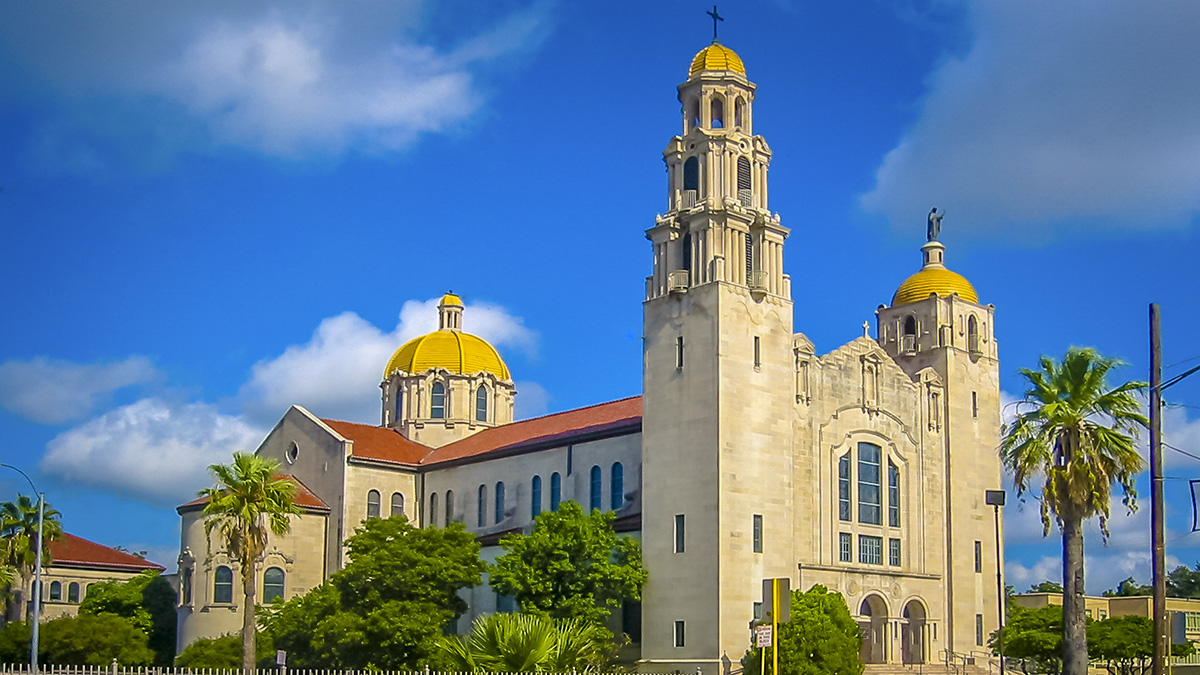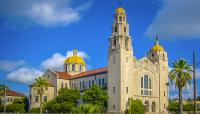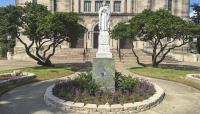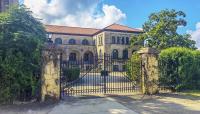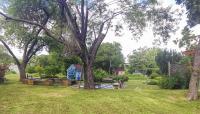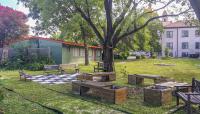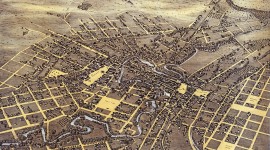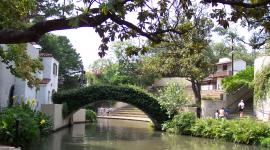Landscape Information
Designed by architect Charles L. Monnot, and completed in 1931, the Basilica of the National Shrine of the Little Flower, originally Our Lady of Mount Carmel and St. Thérèse Church, is one of only 86 basilicas in the United States that bears the papal designation of Minor Basilica. The 2.5-acre site is dedicated to St. Thérèse of Lisieux, the “Little Flower,” and was built to promote religious devotion to her. The basilica’s most distinct features are the three golden domes—two capping the asymmetrical towers flanking the entrance and a third over the transept—that are visible from Interstate 10, several blocks to the west.
The grounds to the east of the main entrance are radially designed with walkways that form four irregularly shaped grass parcels, three of which have queen palms along North Zarzamora Street. A circular flowerbed with a statue of St. Thérèse is flanked on both sides by semi-circular raised beds filled with perennials. The grounds to the west of the basilica, occupying the remainder of the block, are enclosed by a metal fence and hedges. Entered via gates on Kentucky Avenue, the main garden lies west of a large, concrete apron for parking. The landscape contains a wide variety of flowering plants, large live oaks, conifers, cacti, a vegetable garden, and a butterfly garden, all informally arranged. A shaded patio is paved to resemble a life-size chessboard. The grounds are traversed by meandering, brick-paved walking paths, which define distinct planting areas and garden rooms. The Basilica was listed in the National Register of Historic Places in 1998.



